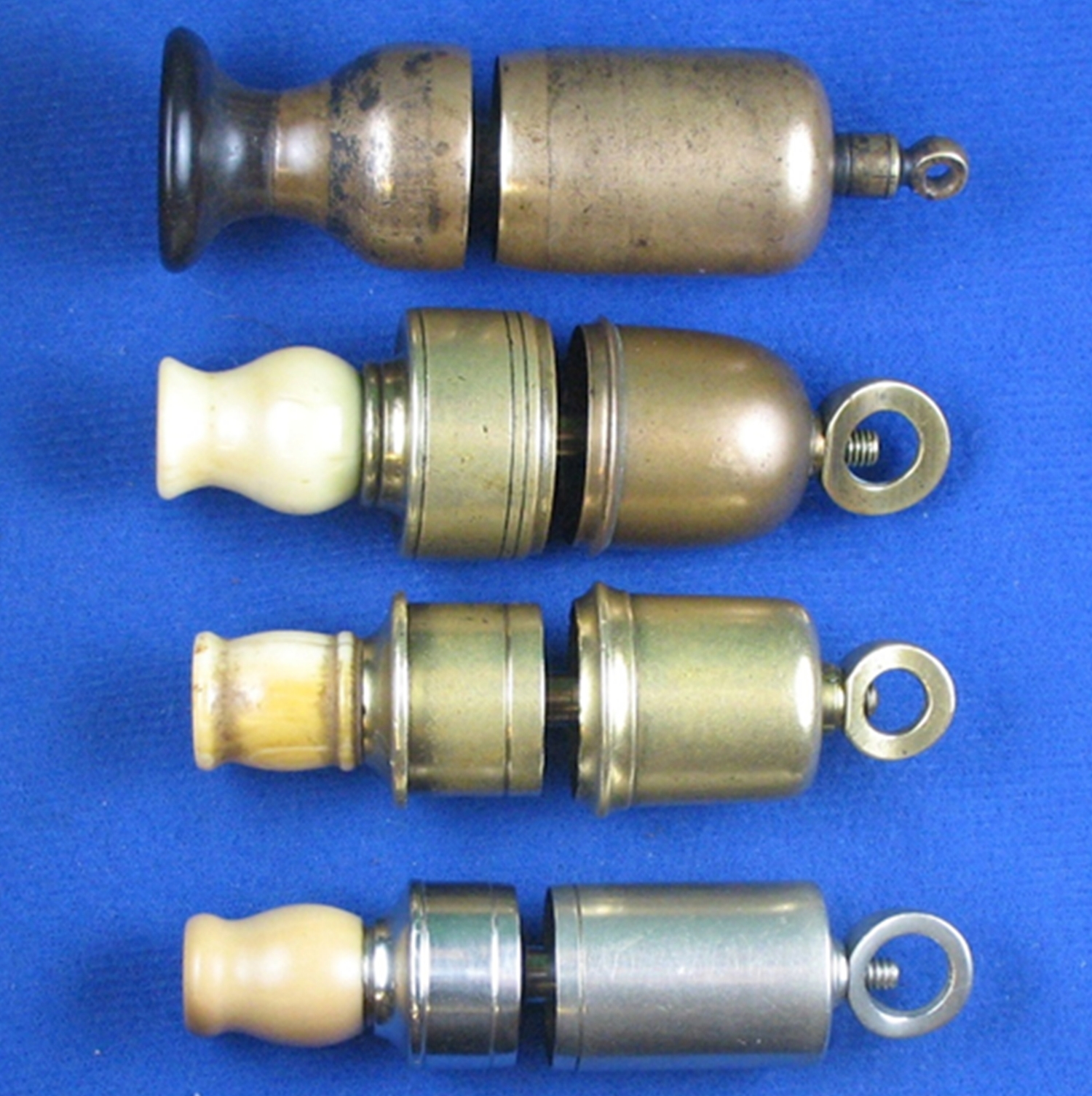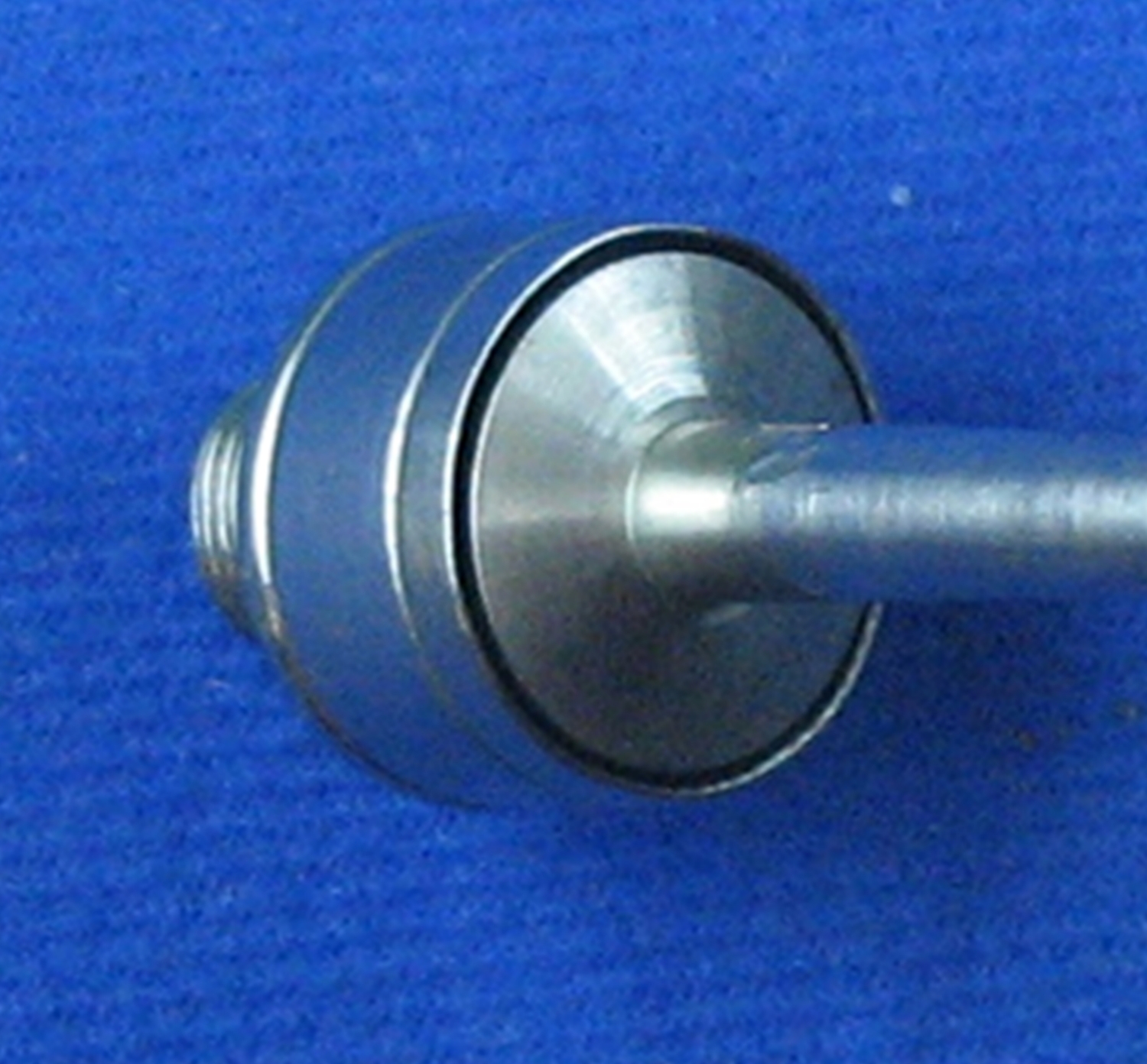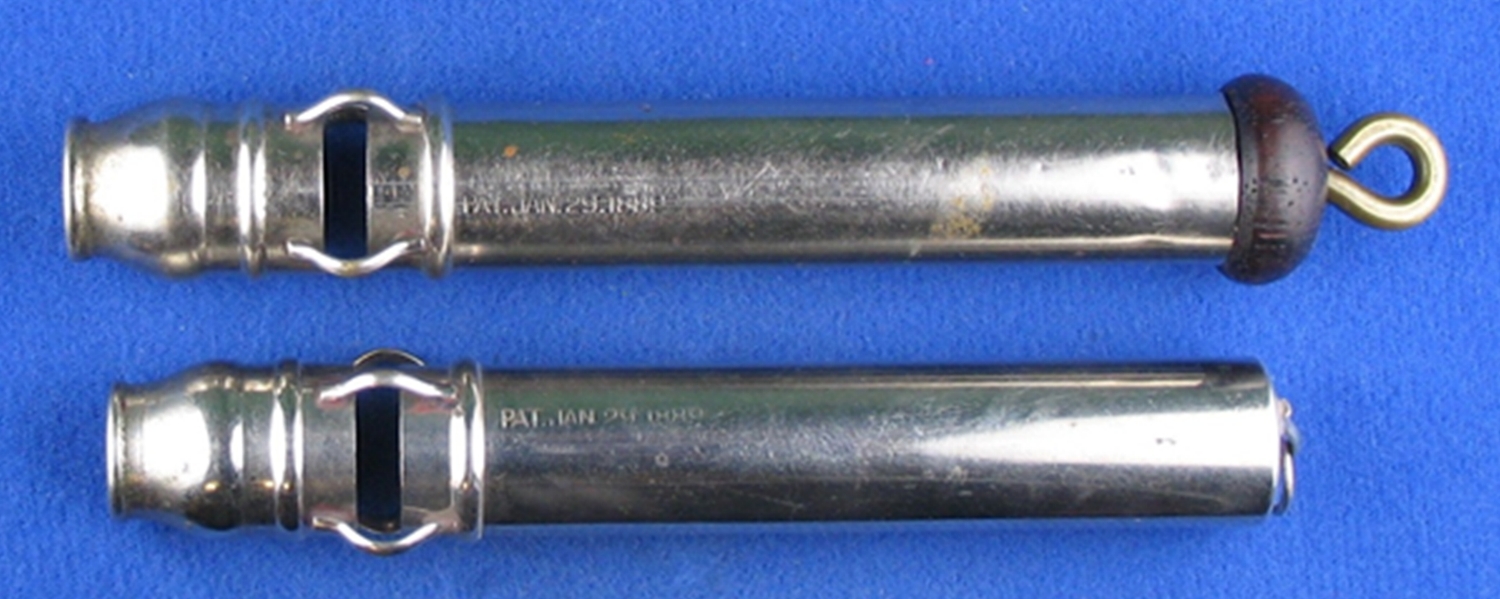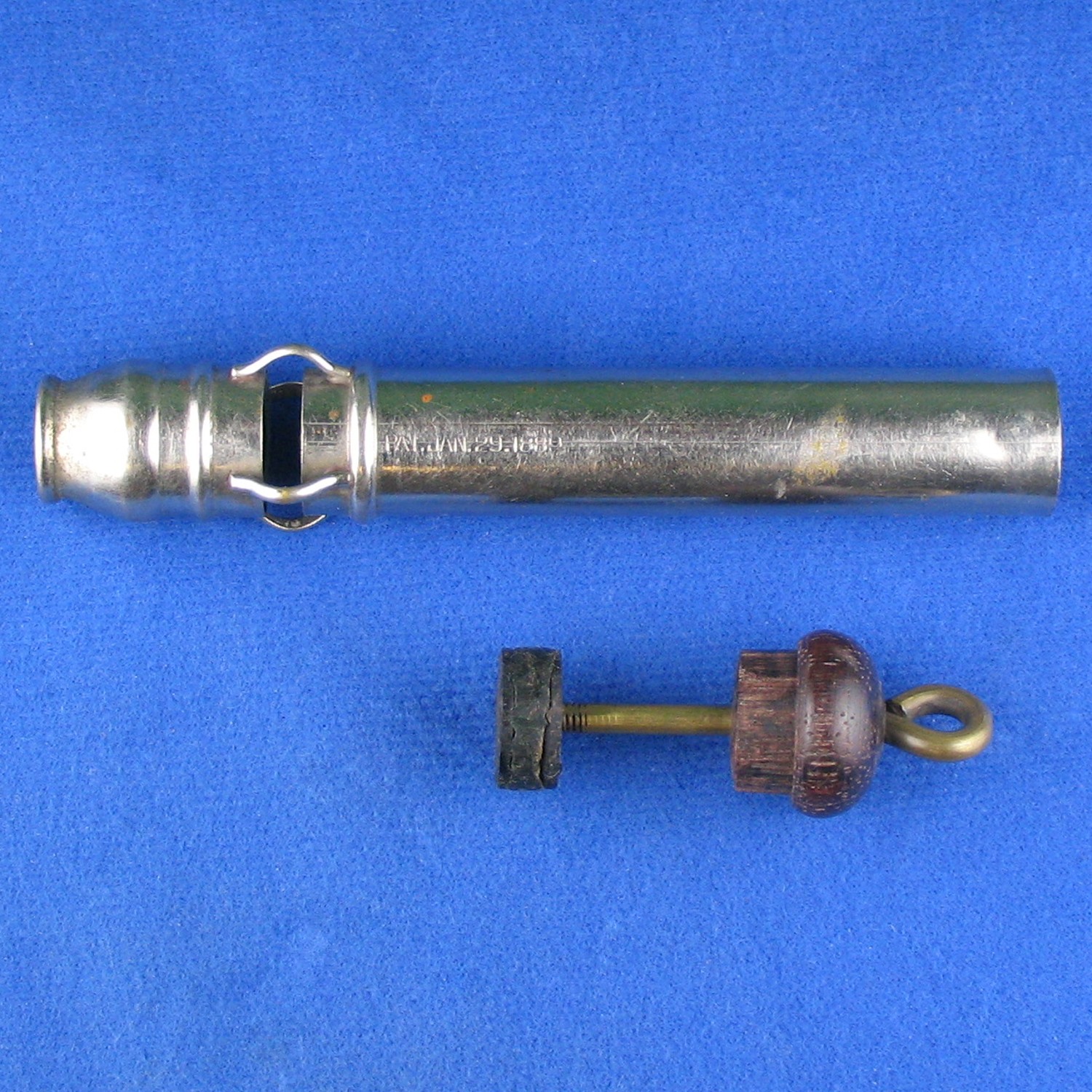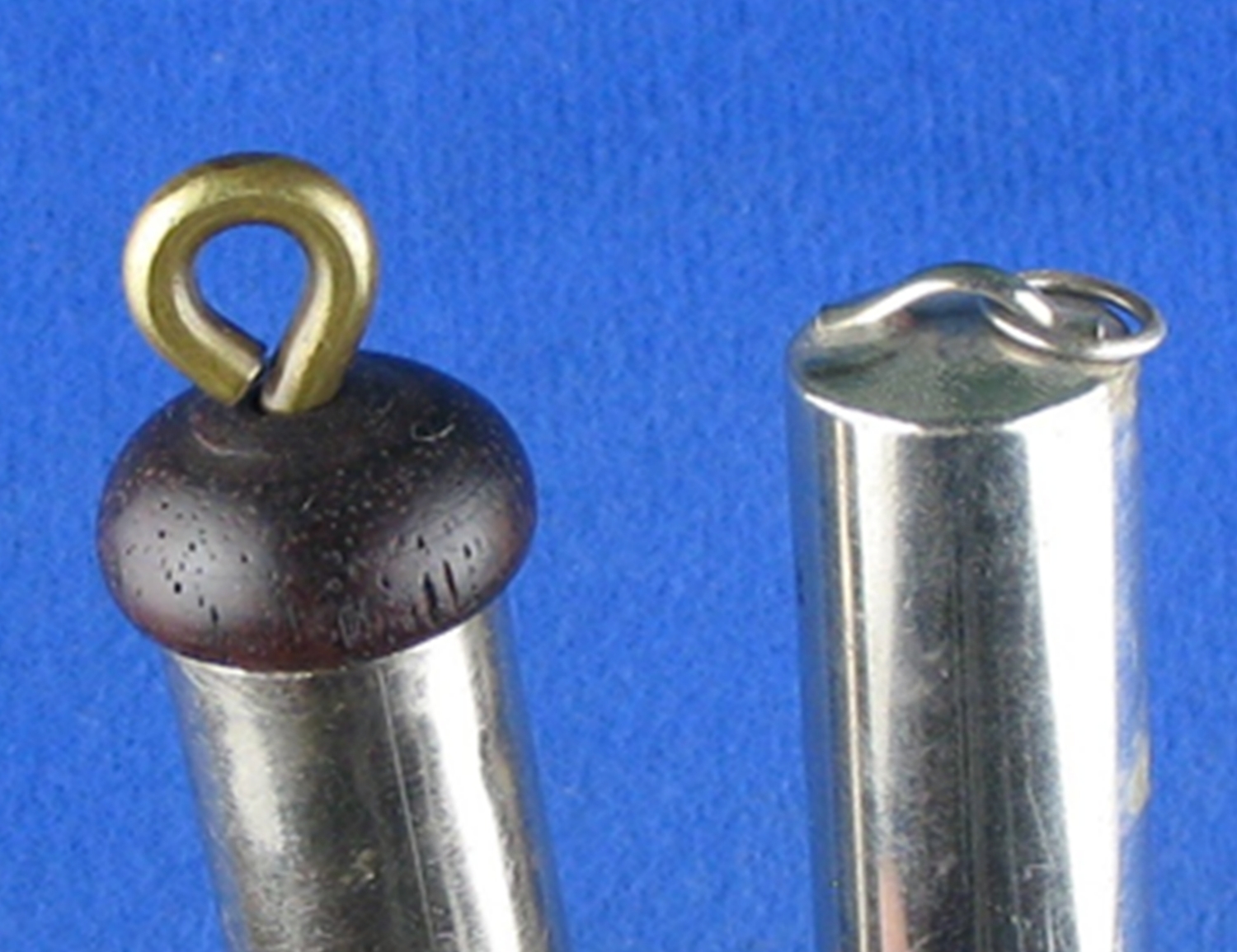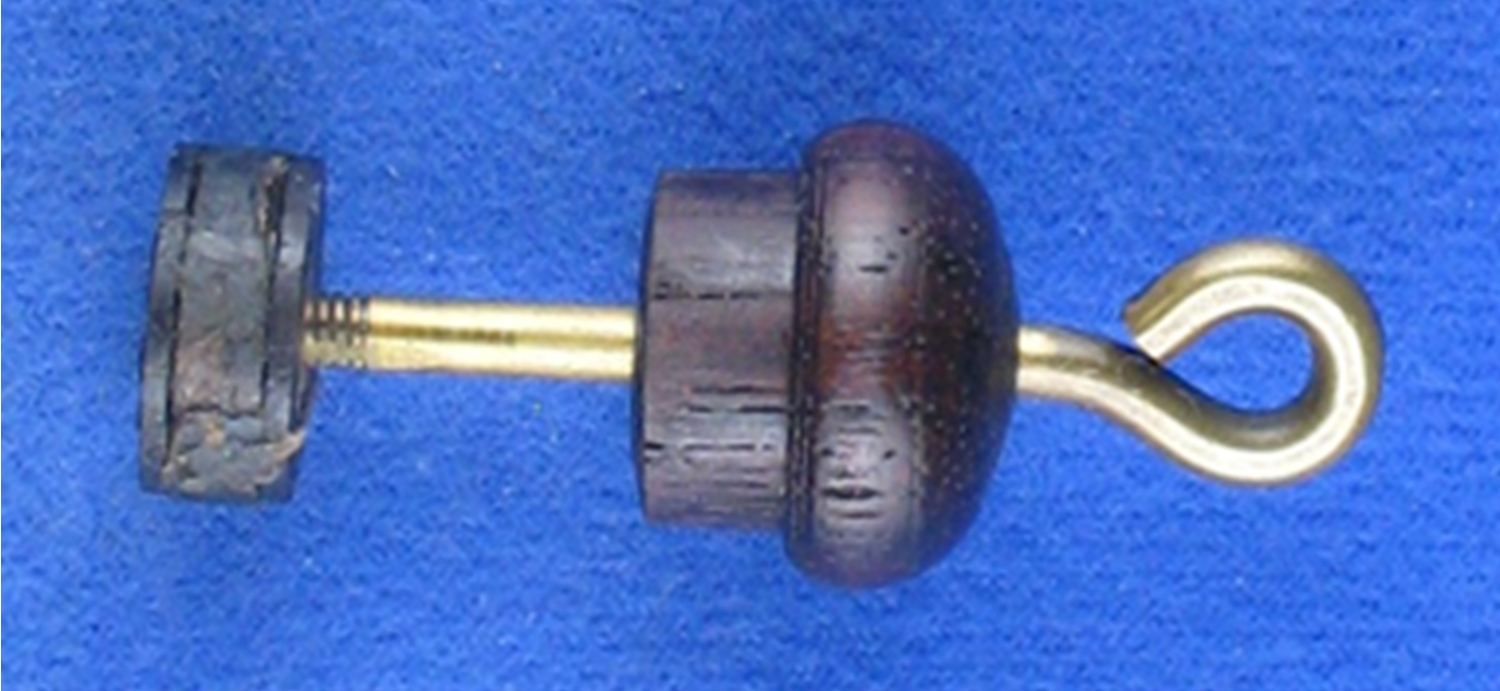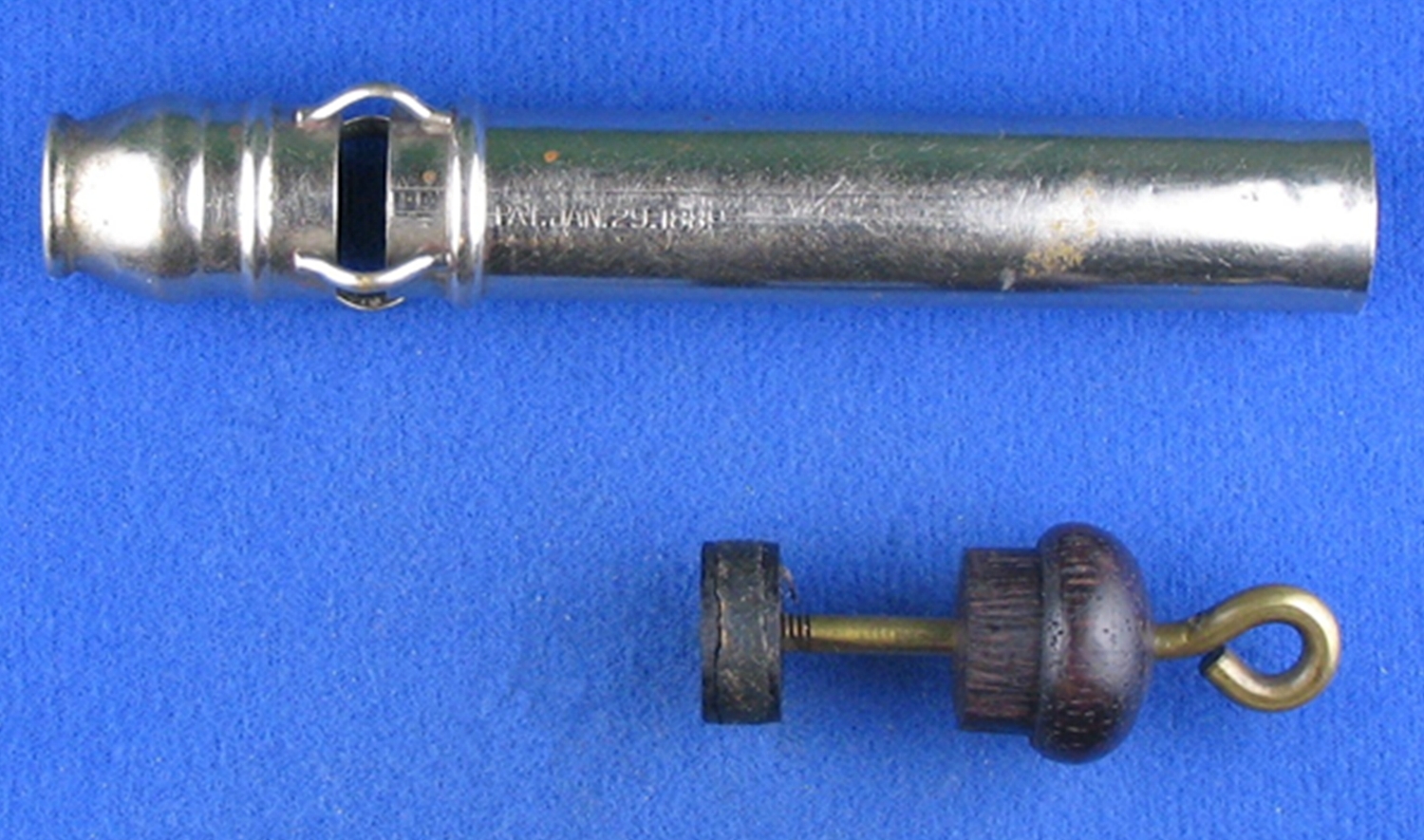Spotlight > Specific Manufacturer > United States > F.L. Johnson > 085
Whistle Archeology
In 1885 a patent for a whistle primarily for cycling was invented with a squeeze bowl by F.L. Johnson connecting to a with a unique circular designed edge. It would take 4 more years to use the same circular edge design on a long metal tube ( called the barrel ) whistle, patented January 29, 1889 by Fredrick L. Johnson.
This appears to be the first time in the USA this feature was incorporated into a hand whistle. Previously the concept could be seen only in bulky bell whistles mainly from the UK. A bell whistle was found ( SEE SPOTLIGHT 35 ) in the USA, maker unidentified as of this date. The following examples show the spherical edge whereupon air rushing by creates a whistle sound.
Whether Johnson used this principle or developed it on his own separately is unknown. However he did advance the use and sound creating a very ‘hollow’ sound unique to his whistles.
F.J.Hall would also utilize this construction (1893), but he took this design from Johnson. A.P.Hatch also designed a whistle with this concept ( 1900 ) 15 years after Johnson’s first patent.
It could be said that the ‘stays’ did break up the circumference into separate windows and did indeed do this more apparently with Johnson’s 1899 patent design, the stays being wider than in the original wire stay design from 1889. Hatch’s (1900) design appears to use a complete circumference edge. We have not found any examples of Johnson’s 1899 patented whistle, nor Hatch’s 1900 patented whistle.
Enough whistles were manufactured to be able to find these early Johnson’s when hunting for antique whistles. However, for the first time presented here is a slider whistle that has surfaced made to the 1889 patent.
Note the similarity in all characteristics except the end cap and sliding mechanism. We have not found any catalogs advertising this slider to date.
TWG
Posted April 05, 2018
